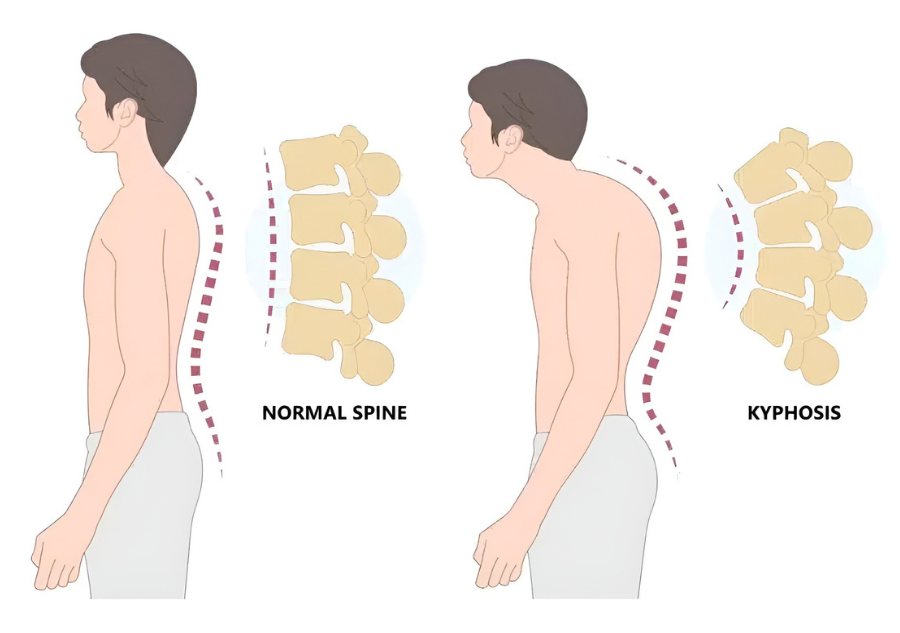What is kyphosis?
Abnormal forward bending of spine leading to a hunchback is called as kyphosis

Causes – Congenital – abnormal bone formation or segmentation, Infection – Tuberculosis of Spine damaging the vertebral bones. Inflammatory – Ankylosing spondylitis making the bone brittle and kyphotic. Developmental – Scheurmann kyphosis commonly seen during Adolescent growth period in boys. Senile – secondary to Ageing related osteoporosis, fractures and spondylosis. Postural – chronic improper sitting in slouched posture.
Symptoms – Hunch back, back pain, myelopathy, weakness legs, inability to have proper vision secondary to bent posture, Early spondylosis, etc.
Treatment – It involves primarily based on the cause and severity of kyphosis. In cases of senile kyphosis, correction of osteoporosis, bracing, Back care exercises and prevention of falls and fractures is the key in treatment. Ankylosing spondylitis kyphosis – control of inflammation with medicines , exercises and kyphosis correction surgeries like pedicle subtraction osteotomies. Tuberculosis is primarily a medical disease treated with antitubercular medicines and kyphosis is treated only if it produces or it can produces neurological deficits with correction surgery using pedicle screw and cage reconstruction. Scheurmann kyphosis and congenital kyphosis are usually seen during younger age group will need proper evaluation for deciding bracing vs surgical management





